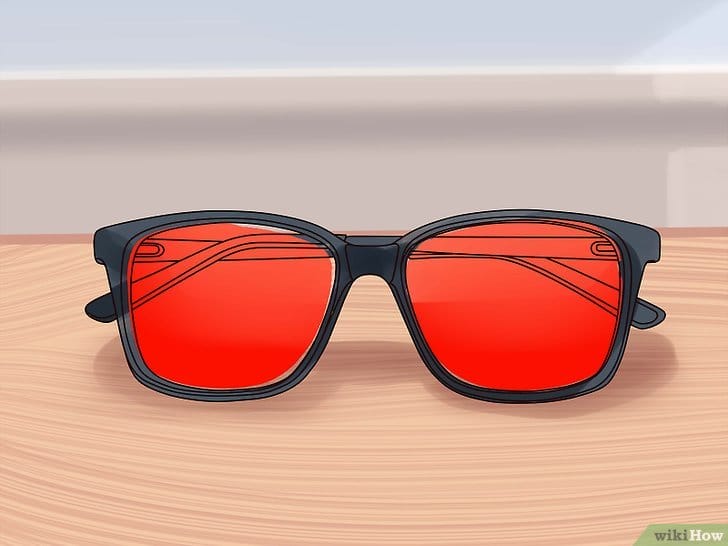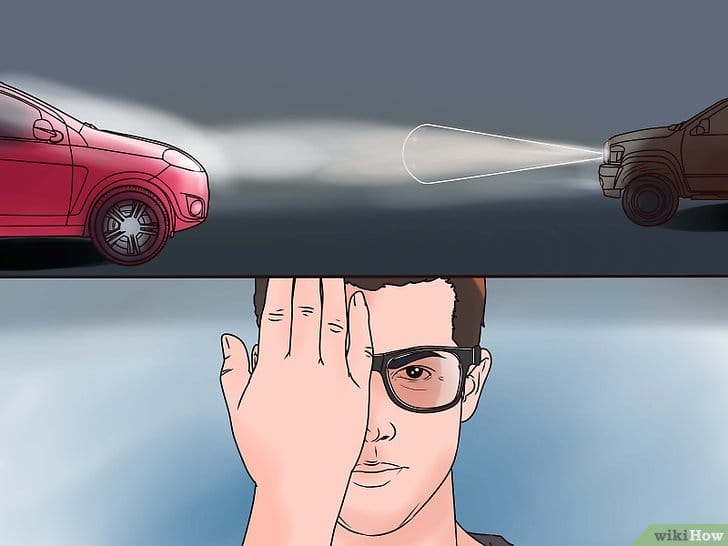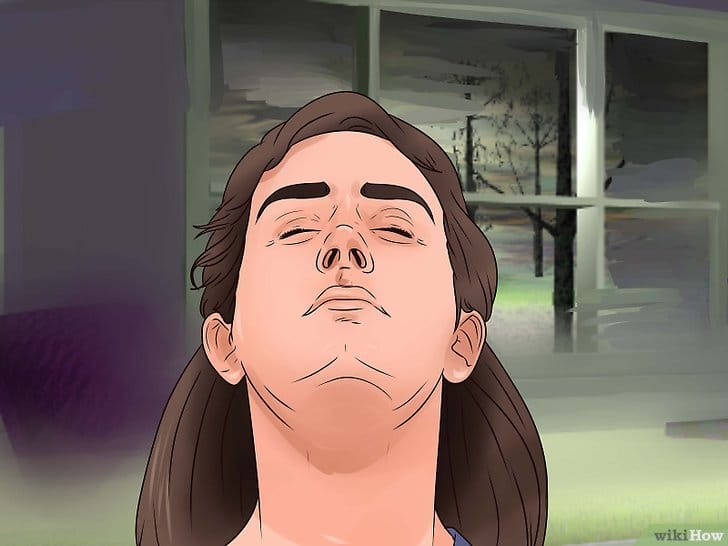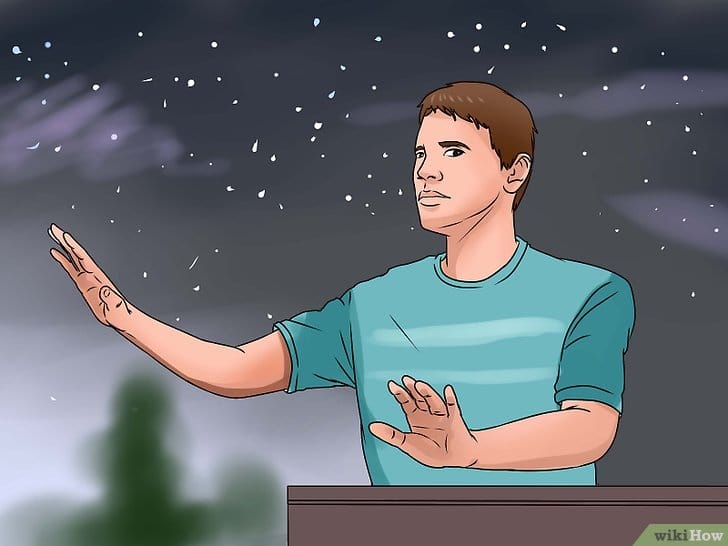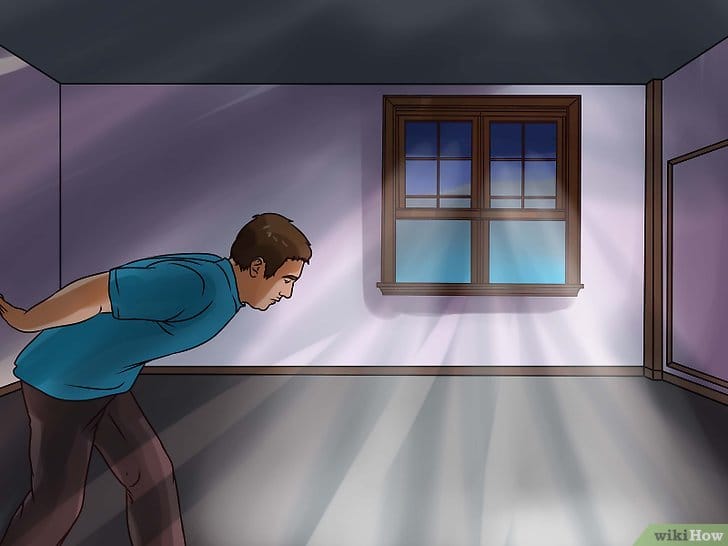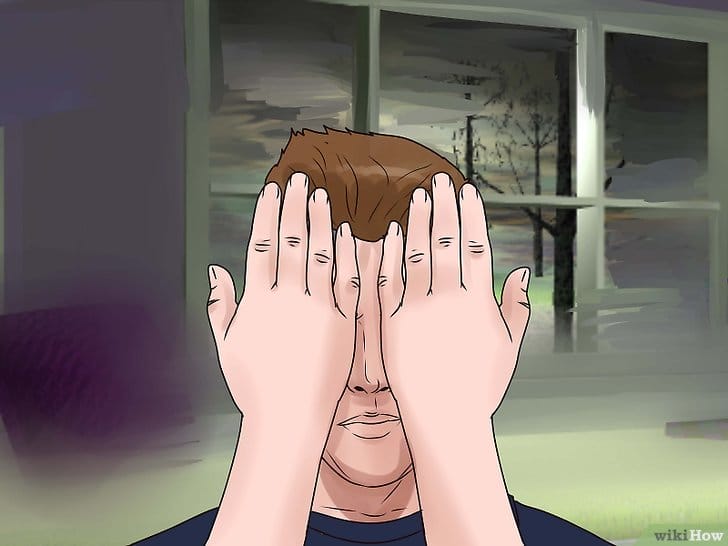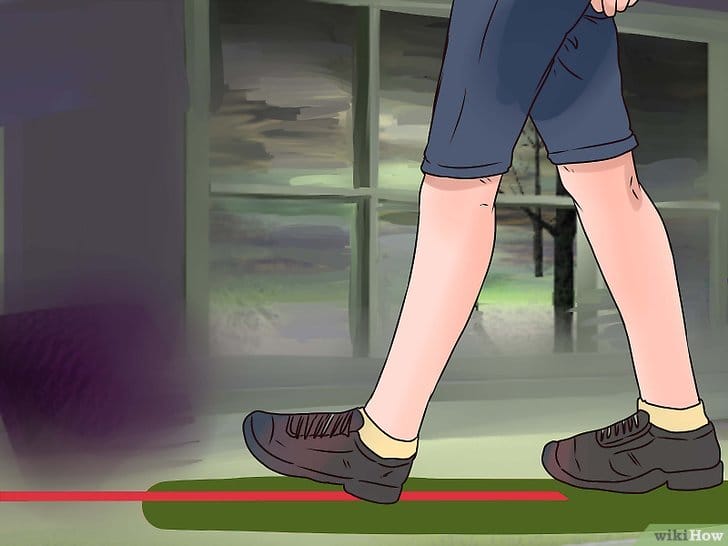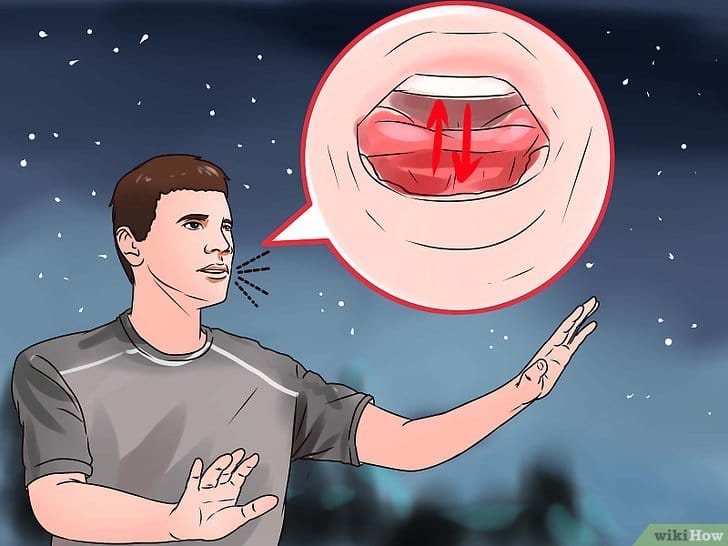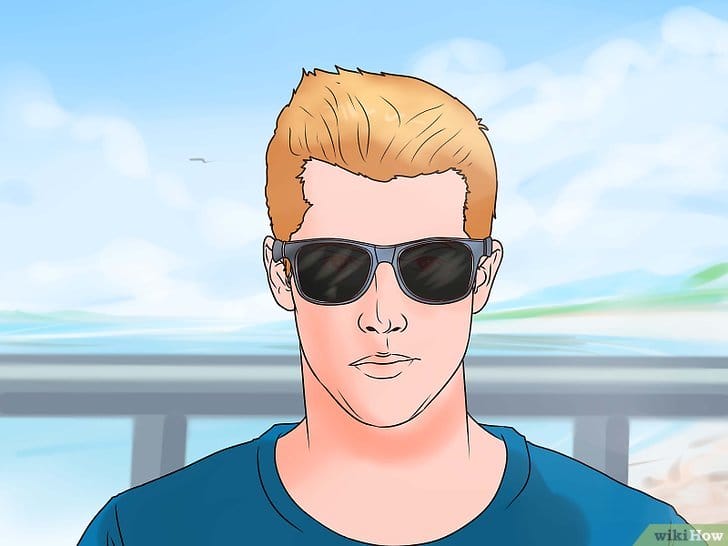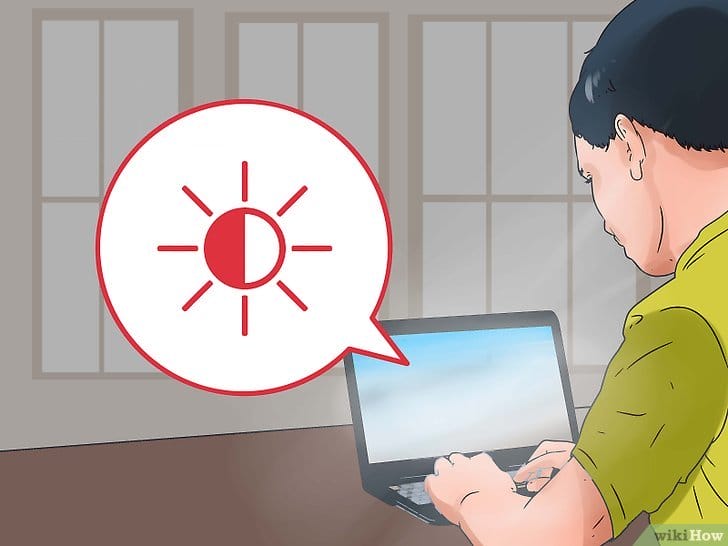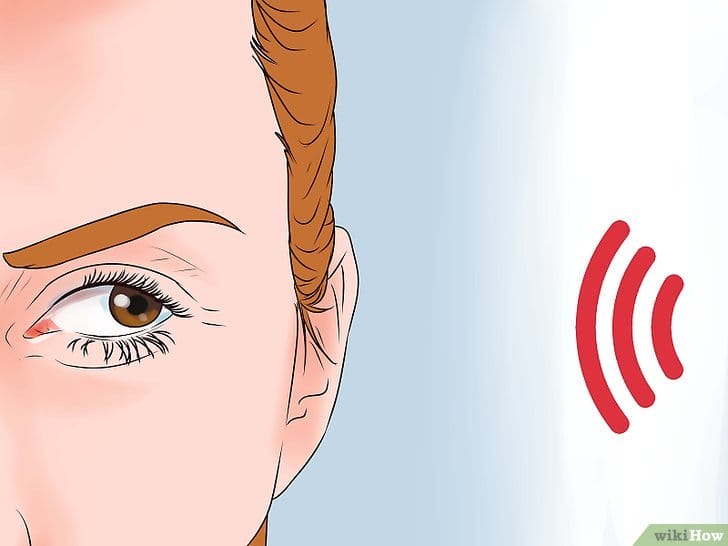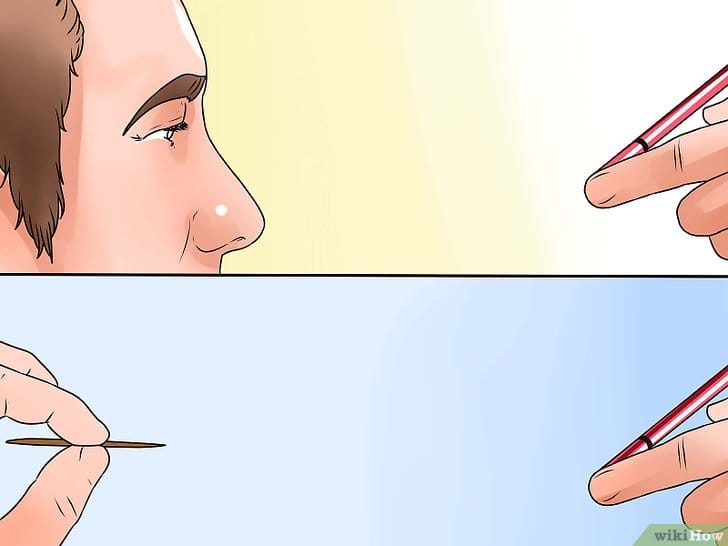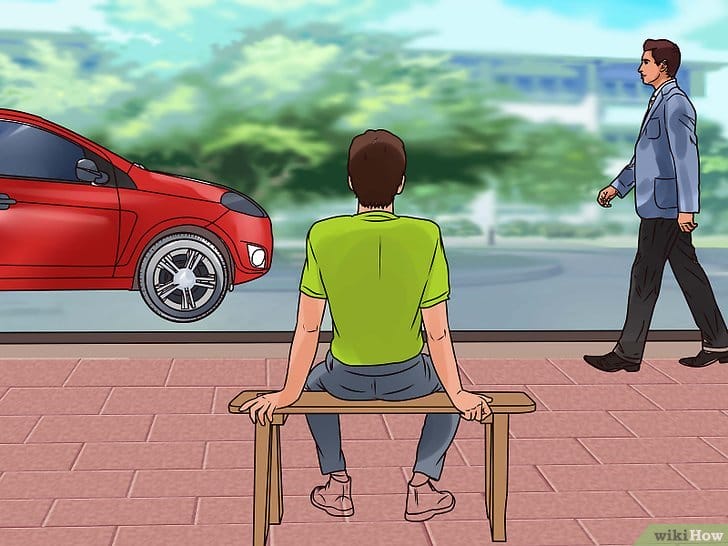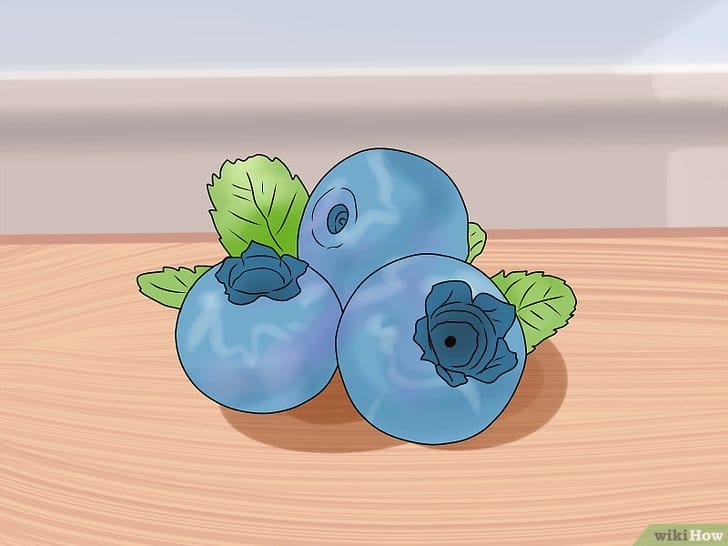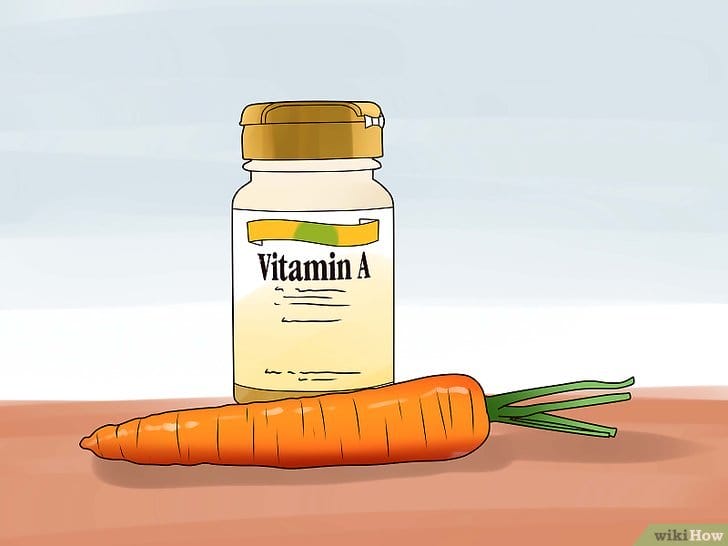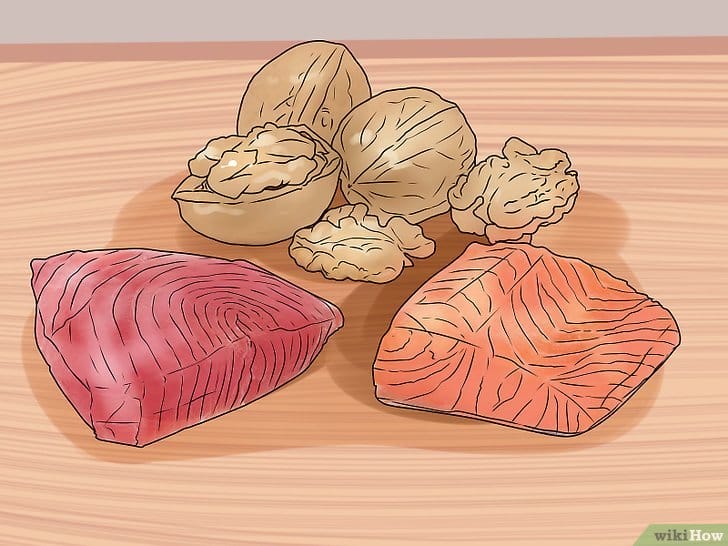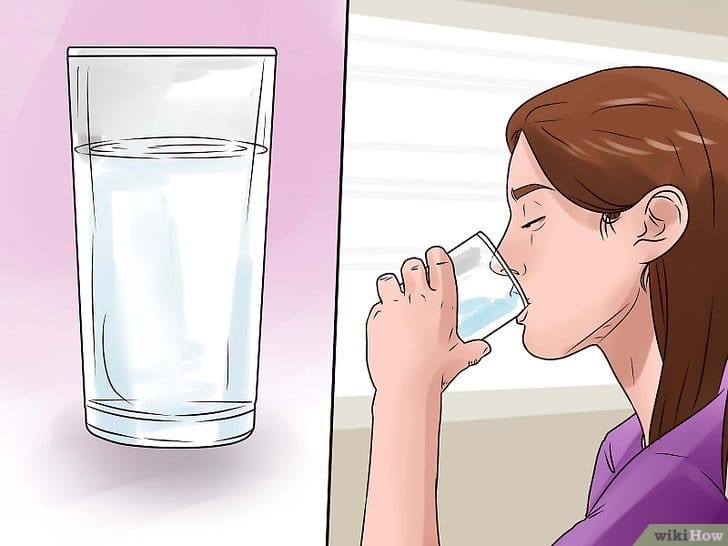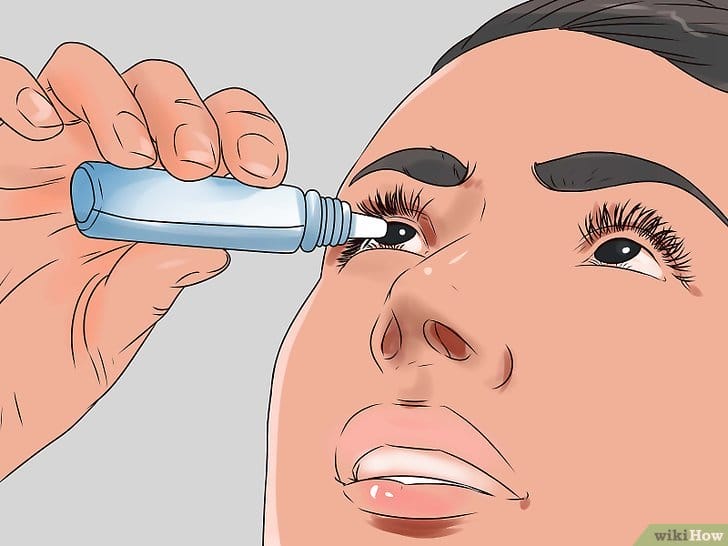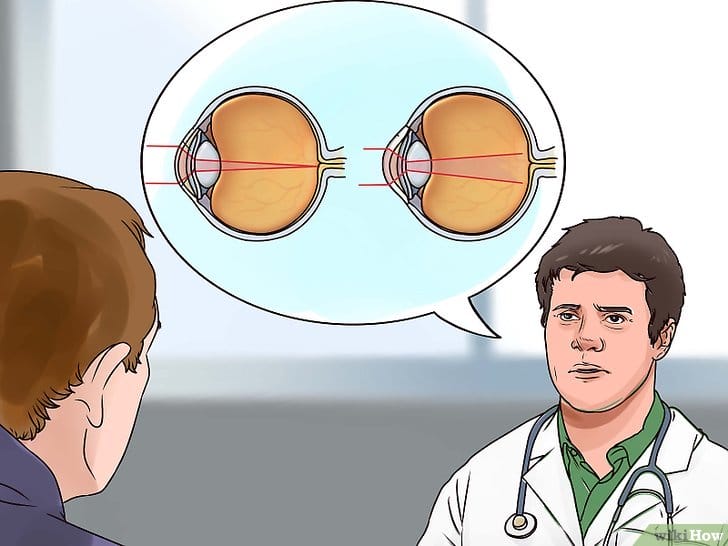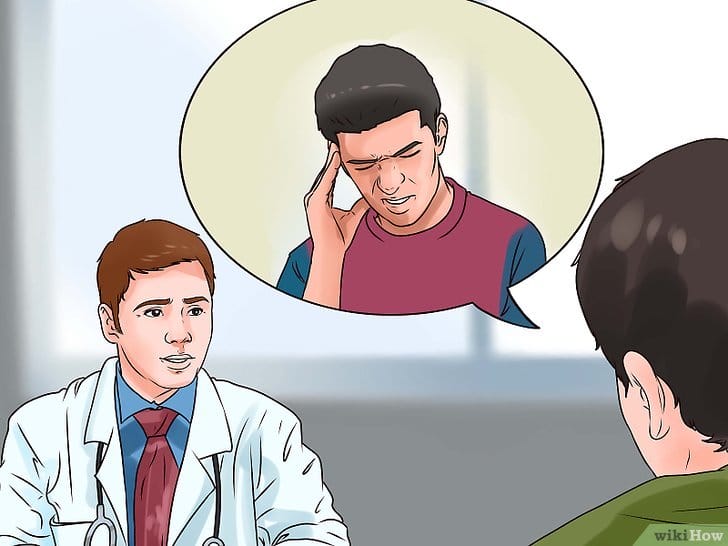Under what conditions is this possible?
Not everyone will be able to see in complete darkness with constant systemic training, which will be described below, namely those who do not have bad habits, mental and emotional trauma, head and spine injuries.
The thing is that with a strong emotional shock, trauma, fear, a person’s consciousness turns off one or another area of the brain, such a fuse is a protective mechanism of our body.
What will this workout give and why study it?
The author of this article is by no means trying to impose any thought or new religious teaching, but only shares his experience with those who wish to comprehend themselves and the world around them.
Such training will help develop the perception of the world around you at night, and such an ability as the ability to see in complete darkness or simply a magical look will help to determine the danger in time, avoid trouble in the dark nooks of the night streets, especially gifted people will be able to see the intangible world.
Sticks
The retina has two types of photoreceptors – cones and rods. We are interested in the so-called rod cells, named for the type of cylindrical shape. They convert light stimuli into nervous excitement. The light sensitivity of the rods is achieved due to the presence of the rhodopsin pigment.
Red glasses
Try wearing red-tinted glasses before entering a dark room. The rods ignore the light of this color, so the eyes adapt more quickly in the dark. Such glasses, for example, are worn by pilots before a night flight.
Bright light
The pupil narrows and expands depending on the light entering the eye. The brighter the light is the pupil. In a dark room, on the other hand, it will expand to receive all possible light. Therefore, try to avoid bright light before entering a dark room – the eyes adapt faster.
Sonar
Anyone can develop the ability to navigate by sound. This system, called Click Sonar, was specially designed for blind people. Its action is similar to the sonar used by bats. The principle of sonar is quite simple: clicking sounds with the tongue are reflected from the surface of objects and allow you to approximately “see” their shape.
Special diet
Food can actively affect our ability to see in the dark. Blueberries improve the condition of the retina, vitamin A is used by doctors to treat the so-called “chicken” or night blindness. It will be most easily obtained from vitamins – however, a diet rich in carrots, broccoli, pumpkin, fish and liver will do.
Water
98% of the surface of our eyeball is water. Dehydration leads to dry eyes, which makes it difficult to see in the dark. Try to keep your water balance at the generally accepted level of 2 liters per adult per day.
Noctolopic diet
Studies by English scientists Home and Wald have proven that a diet high in vitamins A and B12 improves night vision. In particular, British pilots were given special rations containing blueberries and Coca-Cola (sugar + caffeine) before the night raids of German aviation. And it had an effect! Champions in the content of vitamins that increase noctolopia are orange fruits and vegetables: carrots, sea buckthorn, oranges, persimmons. Another important ingredient in the night hunter’s menu is the presence of a sufficient amount of fat.
Part of Improving your ability to see in the dark
-
Use your sticks. It takes 30 to 45 minutes for the sticks to adjust to the change in lighting around you. The rods only perceive black and white colors and have low definition, but they are extremely sensitive under night lighting conditions.
- Photosensitive pigments are light-sensitive substances found in rods and cones that transmit a visible image to your brain. Rhodopsin is a visual pigment found in rods and is responsible for night vision.
- The ability of your eyes to adapt to darkness depends on a few things that you cannot control, such as your age, previous eye injuries or damage, and any existing eye conditions.
- To see in the dark, you need to know how to increase the sensitivity of your sticks and make your eyes adapt more quickly to sudden changes in lighting.
- In dim lighting, do not look directly into the light source. This is how you use your rods, not the cones, which are activated when you turn your eyes to a dim light source. This technique is often used by astronomers.
-
![How to see better in the dark, helpful tips. How to see in the dark]()
Wear dark or red tinted glasses. Sticks are not sensitive to red light, so wearing such glasses for 20-30 minutes before entering a dark room will help you to quickly distinguish movement inside.
- By blocking out the entire visible spectrum except for red, these glasses will allow your wands to adapt to a kind of darkness before actually entering it.
- This method is used by pilots when they do not have time to be in absolute darkness before a night flight.
-
![How to see better in the dark, helpful tips. How to see in the dark]()
Do not look into the light source. Light sources will cause your pupils to contract, thereby impairing your night vision.
- The pupil is similar to the aperture of a camera, it narrows and expands depending on the amount of light entering the eye. The brighter the light, the narrower the pupil becomes. In low light conditions, your pupil will dilate greatly to absorb as much light as possible.
- By directing your eyes towards the light source, you increase the time it takes for your eyes to adjust to low light.
- If you cannot completely avoid bright light, cover or completely close one eye, or look away until the light source is out of sight.
-
![How to see better in the dark, helpful tips. How to see in the dark]()
Improve night vision while driving. Before getting in your car, take steps to improve your vision for night driving.
- As mentioned above, try not to look directly into the approaching light source. If another vehicle jumps out of a corner with the high beam headlights on, close one eye to prevent temporary loss of vision in both eyes and quickly return to normal night vision.
- Look at the white lane to the right on your side of the road. This will allow you to maintain a safe direction of travel, notice moving objects with peripheral vision, and also avoid re-glare from the high beam of oncoming cars.
- Reduce the intensity of the dashboard lighting to a low but safe level to help your vision when driving at night. Also use night mode on your rearview mirrors. This will reduce glare from vehicles following you.
- Wash your headlights, wipers and windshield regularly. At night, spots on your windshield can become bright light sources.
- Perform timely maintenance on your vehicle, including adjusting your headlights and fog lights. Even a slight displacement of the headlights by one or two degrees can prevent other drivers from developing vision problems as a result of your headlights.
-
![How to see better in the dark, helpful tips. How to see in the dark]()
Let your eyes get used to the dark. The best way to learn to see in the dark is to let your eyes slowly adapt to darkness by staying in absolute darkness for 20-30 minutes.
- To get used to the dark even faster, put on a sleep mask before entering a darkened area, close your eyes, or close your eyes so they can adjust.
- Try wearing a pirate headband. If you block one eye from the light for 20-30 minutes, then by the time you enter a dark room, this eye will already get used to the darkness.
-
![How to see better in the dark, helpful tips. How to see in the dark]()
Use peripheral vision. Each of your eyes has natural blind spots, which makes it much more difficult to navigate in the dark if you are trying to focus your gaze.
- As you move through a dark room, try to focus on an object away from you or in close proximity to the direction of travel. Through peripheral vision, you will be able to better notice the movement and shape of an object than by trying to see it directly.
- Peripheral vision employs more rods, which play a key role in orientation in the dark, defining the shape of an object, and detecting movement.
-
![How to see better in the dark, helpful tips. How to see in the dark]()
Go down to see silhouettes and use a contrast effect. Remember that your sticks are color-blind and clear-cut and are your guide in the dark.
- The night sky is a wonderful source of light. Dropping low enough, light from the night sky or from a window provides enough contrast to make it easier for the sticks to work in your eyes.
- Some martial arts teach you to stay as low as possible, using the sky to illuminate objects and opponents so that you can more easily distinguish their silhouette.
- Although rods are more sensitive to light than cones, they can only distinguish between black and white and low quality images by contrasting the available light source behind objects.
-
![How to see better in the dark, helpful tips. How to see in the dark]()
Massage your eyeballs. Close your eyes firmly and press lightly on them with your palms.
- After about 5-10 seconds, the surrounding darkness will turn white for a few seconds. When black replaces whiteness again, open your eyes and you will see much better in the dark.
- Rumor has it that special forces soldiers use a similar technique – once in the dark, they tightly shut their eyes for 5-10 seconds. Although the effectiveness of this method has not been proven by the scientific community, it can still help someone.
-
![How to see better in the dark, helpful tips. How to see in the dark]()
Use all your senses to “see.” In a dark room, step carefully until your eyes get used to the darkness.
- Keep both feet on the ground, extend your arms forward, and move slowly. Watch closely for changes in sound, which could indicate the presence of a door, hallway, or window nearby. Move your hands in front of you to avoid hitting a tree or doorway.
-
![How to see better in the dark, helpful tips. How to see in the dark]()
Learn to navigate by sound. Researchers have made great strides in working with blind people. They have developed the ability to perform clicking sounds with their tongue, called click sonar. It is similar to the sonar used by bats.
- Using snapping sonar, you can accurately locate objects in front of you and around you. An experiment was conducted in which a woman made clicking sounds with her tongue to “scan” the space in front of her until she could find a saucepan held by another person. With a couple of extra clicks, she was able to identify the type and shape of the lid on the pot.
- Another snapping sonar expert is capable of mountain biking over rough terrain and avoiding obstacles with no problem.
- Snapping sonar experts claim that everyone can develop this ability.
Second way
It takes an hour for the eye to fully get used to the darkness. However, the most intense adaptation occurs in the first ten minutes. When you know that you will soon enter a dark tunnel, prepare in advance for this by closing at least one eye for a few minutes (or two, if you have three). When darkness envelops you, you will meet it fully armed, opening your closed eye and closing the other.
By the way, while in the tunnel, avoid looking at any light sources, no matter how dim. “If a direct beam hits the pupil, it will be much more difficult for the eye to adjust to darkness again,” warns Peter.
Part Protecting and Improving Your Eyesight
-
![How to see better in the dark, helpful tips. How to see in the dark]()
Wear sunglasses during the daytime. Several hours of exposure to bright sunlight and ultraviolet light can impair your ability to adapt to darkness.
- For every 2-3 hours of being out in the sun during the daytime without sunglasses will slow your adaptability to darkness by about 10 minutes.
- In addition, in addition to slowing down the adaptation to darkness, the quality of night vision is also reduced. For example, 10 days of exposure to bright sunlight without goggles can cut your ability to see in the dark by half.
- Over time, your rods, cones, and light-sensitive pigments will return to normal. The duration of exposure is different for each person.
- Use sunglasses with a neutral gray color that allows 15% of visible light to pass through.
-
![How to see better in the dark, helpful tips. How to see in the dark]()
Reduce the brightness of your computer. If you are working at night, set the brightness of your monitor to the lowest setting.
- If you are in a dark room but staring at a bright screen, your night vision performance will be significantly reduced.
- Some programs help you adjust the screen brightness depending on the time of day.
-
![How to see better in the dark, helpful tips. How to see in the dark]()
Rest your eyes. Take frequent breaks between sitting in front of the monitor, reading books, or other long periods of attention.
- Your eyes need frequent rest. After every 20 minutes of intense work, especially in front of a computer screen, take a break and stare into the distance for 20 seconds. This will allow your eyes to refocus.
- After every two hours of concentrated work in front of a computer screen or other activity that requires close observation, rest your eyes for 15 minutes.
- Don’t let your eyes overwork by taking a five or ten minute nap in the middle of the day. Close your eyes and massage them gently. You don’t have to go to bed to rest your eyes.
-
![How to see better in the dark, helpful tips. How to see in the dark]()
Train your peripheral vision. Using peripheral vision is critical to improving your ability to see in low-light areas.
- Peripheral vision is your ability to notice movement at the edge of your visual field using the sticks in your eyes.
- Developing peripheral vision is an effective way to improve visibility in low light.
- While training your peripheral vision takes a lot of time and effort for most people, it will help you see much better in the dark.
- By doing eye exercises to improve your vision (including peripheral vision), you will begin to see better in the dark.
-
![How to see better in the dark, helpful tips. How to see in the dark]()
Try an exercise that is often used in sports training. Improving peripheral vision is beneficial in many situations, including sports.
- For this exercise, you will need a regular, solid-colored straw. Draw a black stripe around the center of the straw.
- Give the straw to your partner and move away from him 0.3-0.6 meters, taking a toothpick in each hand. Your partner should hold the straw in a horizontal position.
- Look at the black line and notice the ends of the straw with peripheral vision.
- Concentrate on the black line. Try inserting toothpicks into the holes on either end of the straw while keeping your eyes on the black line.
- Once you have filled your hand, you can increase the difficulty of the exercise by using two straws connected to each other.
-
![How to see better in the dark, helpful tips. How to see in the dark]()
Focus on your peripheral vision. Another way to develop your peripheral vision for better night vision is to focus your attention on it and use it more often in daylight.
- Sit down somewhere (preferably outside) where you can observe many different things. Focus on the object directly in front of you.
- Make a mental list of everything that you see around (both movable and immovable), while not distracting from the central object. Look away and look around to see what you might have missed. Make a mental note of how far from the center you could recognize things around you.
- Repeat this exercise, but in a different place, and try to expand the area within which you are able to recognize the surrounding objects.
Third way
Electric lighting contains the entire visible spectrum, from red to violet. And all of them, starting with yellow, can impair your night vision. But to red, according to Peter, eyes accustomed to darkness are the least sensitive.
If on duty you have to periodically run out of the lighted gatehouse and peer into the darkness, whether a thief is climbing into the warehouse, wear glasses with red or orange lenses indoors. This will help your eyes, already adapted to dusk, not to re-adjust to night vision every time.
Part of Diet Change
-
![How to see better in the dark, helpful tips. How to see in the dark]()
Eat blueberries. Blueberry is a plant that is used to make various types of medicines.
- Research has shown that blueberries may have some effect on retinal-related eye problems.
- The most promising research supports the use of blueberries in cases associated with retinal alteration due to medical conditions such as diabetes and high blood pressure.
- Blueberries are believed to improve night vision, although research results are conflicting. Some evidence suggests that blueberries have a positive effect on improving night vision, while others do not support these claims.
- In terms of improving night vision, a recent assessment of blueberries ranks it among other “possibly effective remedies.”
- It is not easy to find raw blueberries, but they are freely available as an extract, jam or jelly. Follow the directions on the package to figure out how much to consume blueberries per day.
-
![How to see better in the dark, helpful tips. How to see in the dark]()
Get more vitamin A. One of the first symptoms of vitamin A deficiency is night blindness (or night blindness).
- Even in ancient Egypt, it was discovered that to treat night blindness, you need to include in your diet the liver, which, as was later found, contains a large amount of vitamin A.
- Lack of vitamin A causes the surface of the cornea to become very dry, which in turn leads to clouding in the front of the eye, ulcers on the surface of the cornea, loss of vision, and damage to the retina and problems with the mucous membrane of the eye.
- Foods such as carrots, broccoli, pumpkin, cantaloupe, fish, liver, fortified cereals, dairy products, cabbage, blueberries, and apricots are excellent sources of vitamin A.
- While increasing your intake of vitamin A-rich foods may be beneficial, research in this area has shown that dietary supplements provide significantly more vitamin A. Moreover, excessive consumption of these foods will not improve your vision.
- Vitamin A can be purchased in pill or capsule form and the dosage is given in micrograms or units. The average recommended adult intake of vitamin A is 800 to 1,000 micrograms, or 2,600 to 3,300 units per day.
- The protein rhodopsin, which is in the eyeball, breaks down into retinal and opsin when exposed to light and is synthesized back in the dark. Acute vitamin A deficiency can lead to night blindness, but additional vitamin A will not improve vision.
-
![How to see better in the dark, helpful tips. How to see in the dark]()
Increase your intake of dark green and leafy vegetables. When it comes to improving night vision and vision per se, the greatest benefit can be gained by focusing on what foods you eat.
- Collard greens, spinach, and kale are rich in nutrients that protect the eyes by filtering out certain light waves that can damage the retina of the eye.
- These foods also protect the eyes from certain degenerative processes, such as age-related macular degeneration.
-
![How to see better in the dark, helpful tips. How to see in the dark]()
Eat more healthy fats. In particular, eat more foods that contain omega-3 fatty acids.
- Omega-3 fatty acids are found in fish, especially fatty varieties such as salmon and tuna, as well as kale, vegetable oils, nuts (particularly walnuts), flax seeds, flaxseed oil, and leafy vegetables.
- Omega-3 fatty acids fight macular degeneration and help maintain eye health, good vision, and dryness.
- One study found that patients who ate fatty fish once a week had a half-fold reduction in their risk of developing neovascular macular degeneration. If you consume enough omega-3 fatty acids for an extended period (more than 12 years), the risk of developing this disease will decrease even more.
-
![How to see better in the dark, helpful tips. How to see in the dark]()
Drink plenty of fluids. The surface of the eye is 98% water. Dry eyes are caused by dehydration, which will prevent you from seeing in the dark.
- Drinking enough water is very important for overall health, although the direct link between drinking fluids and improving vision is not straightforward.
- Some experts argue that certain circumstances that negatively affect the level of water balance in the body can lead to impaired vision and overall eye health.
- For example, high temperatures, low humidity climates, or intense sunlight can cause the basal layer to lose its function due to dehydration, adversely affecting your vision.
- To maintain the health of your eyes, follow the recommended water intake, trying to drink at least 2 liters daily. Depending on the intensity of work and environmental factors, this figure may differ.
Fourth way
You can also stimulate night vision with grated carrots with sugar: glucose and carotene increase the sensitivity of the eyes. And before this light snack, it is advisable to do a couple of gymnastic exercises. Light muscular exertion accelerates the adaptation of the eyes to darkness.
Well, now you no longer need to command “Get out of the twilight!”, Because you can perfectly see everything in it.
Part Getting Medical Assistance
-
![How to see better in the dark, helpful tips. How to see in the dark]()
See your optometrist. Day and night vision care includes consultation with an ophthalmologist and / or optician. Oculists recommend getting an exam once a year to make sure your vision hasn’t changed significantly.
- If you cannot see well in natural light, then you will not see well at night either. Make an appointment with your doctor and ask about your night vision.
- Make sure prescription lenses are suitable for your current needs. Your vision changes naturally over time, so you may need to change your lens prescription.
-
![How to see better in the dark, helpful tips. How to see in the dark]()
Keep your eyes moist. Talk to your doctor about possible dry eye problems.
- Healthy, moist and relaxed eyes see much better, while tired and dry eyes have a harder time picking up movement in low light.
- Try to rest your eyes and keep an eye on their moisture. Blink frequently, especially when you have to stare at the screen of a computer, laptop, e-book, or TV.
- If your eyes tend to dry out, get over-the-counter eye drops to help reduce redness and moisturize your eyes. You may also want to consult with your doctor about prescription eye care products that can help relieve dryness.
-
![How to see better in the dark, helpful tips. How to see in the dark]()
Talk to your optometrist about any complications. During a routine examination, your doctor may not ask about your night vision.
- Be sure to describe the problems you have with your night vision. Although many vision changes are associated with age, some cases may be related to latent diseases that lead to visual impairment.
- Examples of diseases and conditions that lead to changes in vision are: cataracts, macular degeneration, astigmatism, glaucoma, senile hyperopia, and myopia and farsightedness.
-
![How to see better in the dark, helpful tips. How to see in the dark]()
Consider the possibility of a medical cause for your vision impairment. See your healthcare provider to assess for possible medical causes. Certain medical conditions and medications can lead to vision problems.
-
![How to see better in the dark, helpful tips. How to see in the dark]()
Medications. In addition to diseases, there are many drugs in which vision impairment is one of the side effects.
- The most prominent examples of drugs that can change vision include muscle relaxants (cyclobenzaprine), diuretics (hydrochlorothiazide), and drugs used for seizures, headaches, and mood changes (topiramate).
- Never change your medication yourself. If you experience any visual impairment that your medications may have caused, talk with your doctor about a possible dosage change or drug switch that will help with your condition but will not adversely affect your vision.
How to see in the dark
Now for some tips on how to see better in the dark.
Tip 1: use your peripheral vision
Our retina contains two types of photoreceptor cells – the rod and the cone.
The cones are more sensitive to color, the rods are better at detecting movement and perform better in low light.
The rods are almost entirely responsible for our night vision.
Since the rods are concentrated around our retinas, in order to use them effectively, try not to look directly at what you want to see.
Instead, drop your eyes slightly. This way you will use more rods.
Tip 2: Be a pirate!
Ever wonder why pirates like to wear a headband? This was not always out of vanity (covering the sword, poked his eye).
In addition to looking cool, some pirates wear it so that the covered eye will no longer be sensitive to light and will only be used for night navigation.
Even Myth Busters tested and found the myth plausible.
So the next time you go into darkness, keep one hand on one eye and try to look from the other eye as you go from light to dark.
Tip 3: Wear sunglasses
Wear sunglasses throughout the day. Your ability to adjust to darkness can be reduced by 10 minutes with just 2 hours of bright exposure.
Just 10 days after unfiltered sunlight exposure, you could lose 50% of your night vision.
However, too little light for your eyes is also not good.
For best results, use sunglasses that reduce light in the entire visible spectrum and allow no more than 15% of visible light to pass through.
Tip 4: Become a Cyclops
Oh yeah, put on those cool red tinted glasses. Even though we cannot emit a laser from our eyes, we can still see well.
It is common practice for pilots to wear red tinted lenses in preparation for a night flight if they do not have time to adapt to the dark.
A red tinted lens works by filtering out everything in the visible spectrum except red.
Since the rods in our eye lenses are not sensitive to red, the glasses create the illusion of darkness for your eyes to start adjusting to low light.
Tip 5: Practice makes perfect
To see in complete darkness, practice in a safe environment first. Place yourself purposefully in dark rooms and try to adapt to darker environments.
Always keep two feet on the ground. This helps reduce the likelihood of losing balance and disconnecting.
Keep your hand in front so you don’t hit the wall. Keep your head low to avoid obstacles that may hang from the ceiling.
Tip 6: defining shapes and contrasts
At night, we mainly use our stem cells.
Rod cells are better at detecting shapes than colors. They are also much more sensitive to light, but they can only distinguish between white and black.
To use them effectively, try to look for shapes, outlines, movements, not colors, since we, humans, we can hardly see in the dark anyway.
Tip 7: keep your eyes moving
Try not to look at one object, as it will force your eyes to adapt to whatever light source is available at your point of attention.
Dance with your eyes, scan the area and you can see better in the dark. Keep blinking.
Tip 8: Let Your Eyes Adapt
Give yourself enough time for your eyes to adjust to the darkness.
Close your eyes first before entering a dark environment.
It takes about 25 minutes for our eyes to fully adapt to darkness. Avoid bright light sources as they can interfere with the adaptation process.
Tip 9: use red light
If you need light to see something very important (like a map or the expiration date of your food), but want to avoid losing your adjusted night vision, use a red light or place a red filter over the light source.
Red light does not affect your stem cells and allows you to stay in night vision.
Where do you start? Necessary exercises.
Finding yourself in complete darkness, without the possibility of orientation on the ground, you must close your eyes and ears with your fingers at the same time, take seven deep breaths, while exhaling through closed lips, as if you are trying to blow out a candle.
The very mechanism of this exercise is that with a deep breath we draw in the surrounding energy of the universe, while exhaling we close with our hands the places where this very energy will be used to perceive the real picture of the world. I recommend practicing in the dark at home, and then in the warm season to apply the acquired skills in the forest or city park.
Cat’s eye conspiracy.
The author of this article, in numerous searches for unique rituals and rituals, managed to find an interesting and simple conspiracy on the cat’s eye, which will help to make the transition from one branch of reality to the branch of reality of the world of magic and witchcraft.
Closing your eyes, when the situation requires it, it is necessary to say the following words out loud: “I will walk backwards across the Kalinov Bridge, and the cat’s tail will open my eyes in the darkness.”
After saying these words, turn counterclockwise once and open them. Of course, the first time you can see in complete darkness and fully is unlikely to succeed, but you can still see something.
Contemplation of inner emptiness.
Such training is very difficult for beginners, but the effect of them justifies the expectation. To implement it, you need to retire in complete darkness for a long time for 5-6 hours to begin with, then the task is complicated with the help of a blindfold.
In the first case, our consciousness rushes to the barely visible contours of the surrounding space; in the second case, we try to draw in the surrounding space through our ears, or, more simply, scan the room through our ears.
From my own experience, I can say that you can fully see in complete darkness when you train all the described methods in turn.
Of course, it is possible to get a feline or magical look for orientation in space in a state of complete darkness with the help of magical artifacts woven into the runic ligature of a headdress or to summon a totem creature, but this is all too dangerous and risky for life and within the framework of this article we will not consider …
The first way
A normal eye, unlike a plug-in porcelain, has light receptors (cone and rod-shaped cells). The former are responsible for the perception of color in the daytime, and the latter provide the twilight vision you need.
“Most rod cells are located on the periphery of the retina,” notes Peter Grott, professor of ophthalmology at the Houston College of Medicine. Using this knowledge, you can easily find a reproduction of the “Black Square” in a dark room.
Just use your peripheral vision. You should not so much stare around as scan the room.
Second way
It takes an hour for the eye to fully get used to the darkness. However, the most intense adaptation occurs in the first ten minutes. When you know that you will soon enter a dark tunnel, prepare in advance for this by closing one eye for a few minutes (or two, if you have three). When darkness envelops you, you will meet it fully armed, opening your closed eye and closing the other.
By the way, while in the tunnel, avoid looking at any light sources, no matter how dim. “If a direct beam hits the pupil, it will be much more difficult for the eye to adjust to darkness again,” warns Peter.
Third way
Electric lighting contains the entire visible spectrum, from red to violet. And all of them, starting with yellow, can impair your night vision. But to red, according to Peter, eyes accustomed to darkness are the least sensitive.
If on duty you have to periodically run out of the lighted gatehouse and peer into the darkness, whether a thief is climbing into the warehouse, wear glasses with red or orange lenses indoors. This will help your eyes, already adapted to dusk, not to re-adjust to night vision every time.
Fourth way
You can also stimulate night vision with grated carrots with sugar: glucose and carotene increase the sensitivity of the eyes. And before this light snack, it is advisable to do a couple of gymnastic exercises. Light muscular exertion accelerates the adaptation of the eyes to darkness.
Well, now you no longer need to command “Get out of the twilight!”, Because you can perfectly see everything in it.
Sources used and useful links on the topic: https://domotkn.ru/ritual/660-kak-videt-v-polnoj-temnote.html https://weekend.rambler.ru/crazy-world/39185247-kak-nauchitsya -videt-v-temnote / https://ggn64.ru/chelovek-i-psihologiya/kak-nauchit-sya-videt-v-temnote-5-sposobov-uluchshit-nochnoe-zrenie.html https: // v- mandry.com/kak-videt-v-temnote-16-prostyx-sposobov-uluchshit-vashe-nochnoe-zrenie/ https://www.MaximOnline.ru/skills/lifehacking/_article/kak-luchshe-videt-v- temnote /

